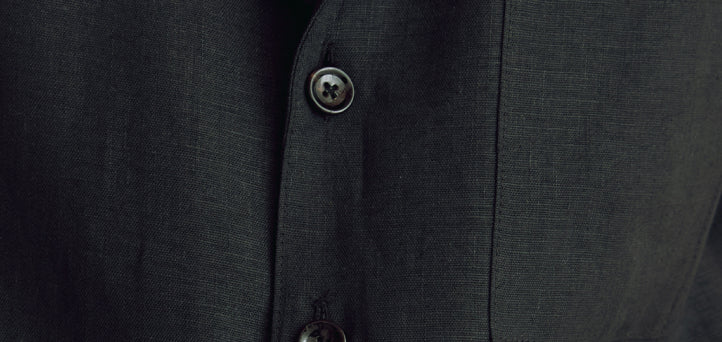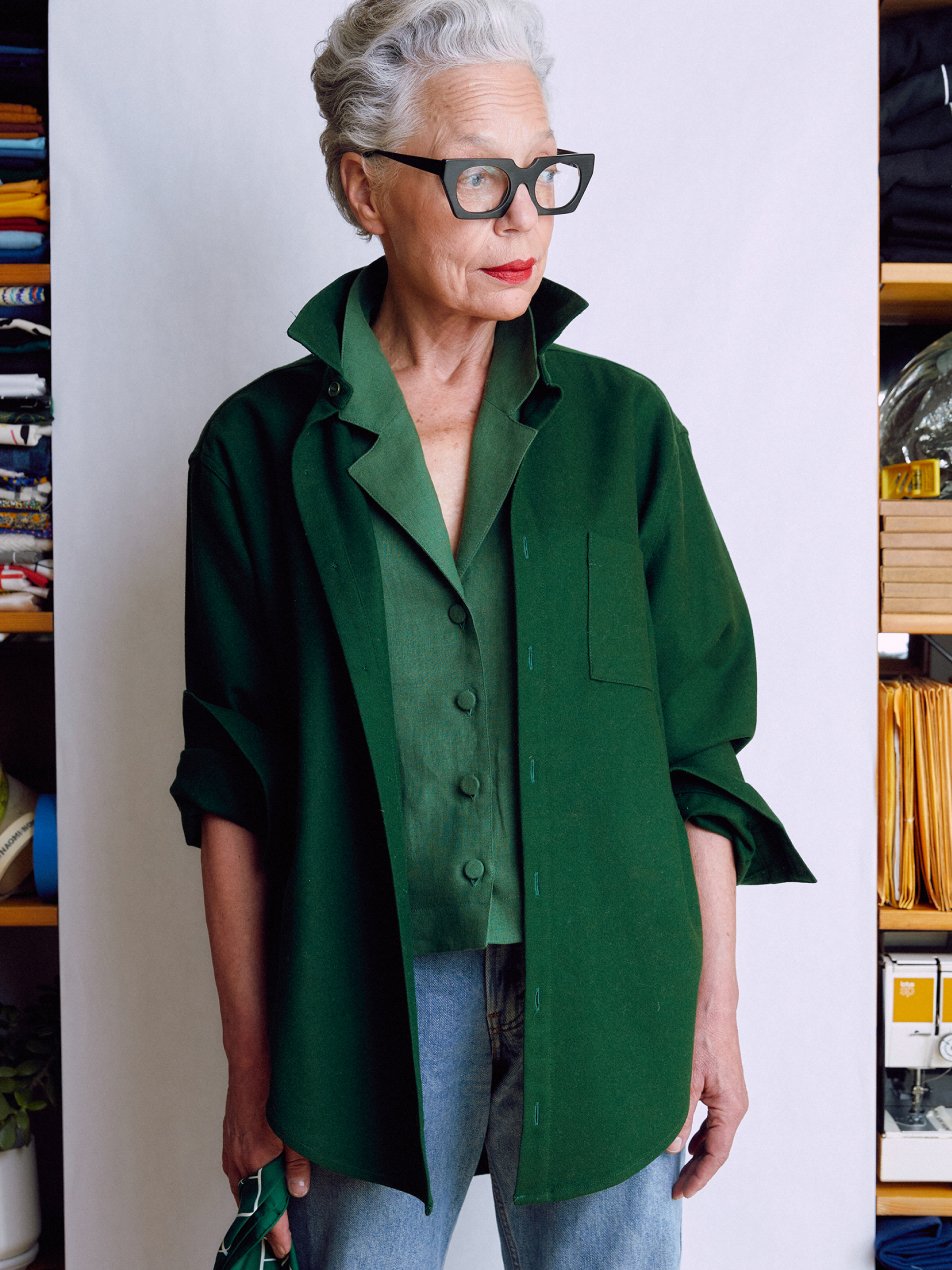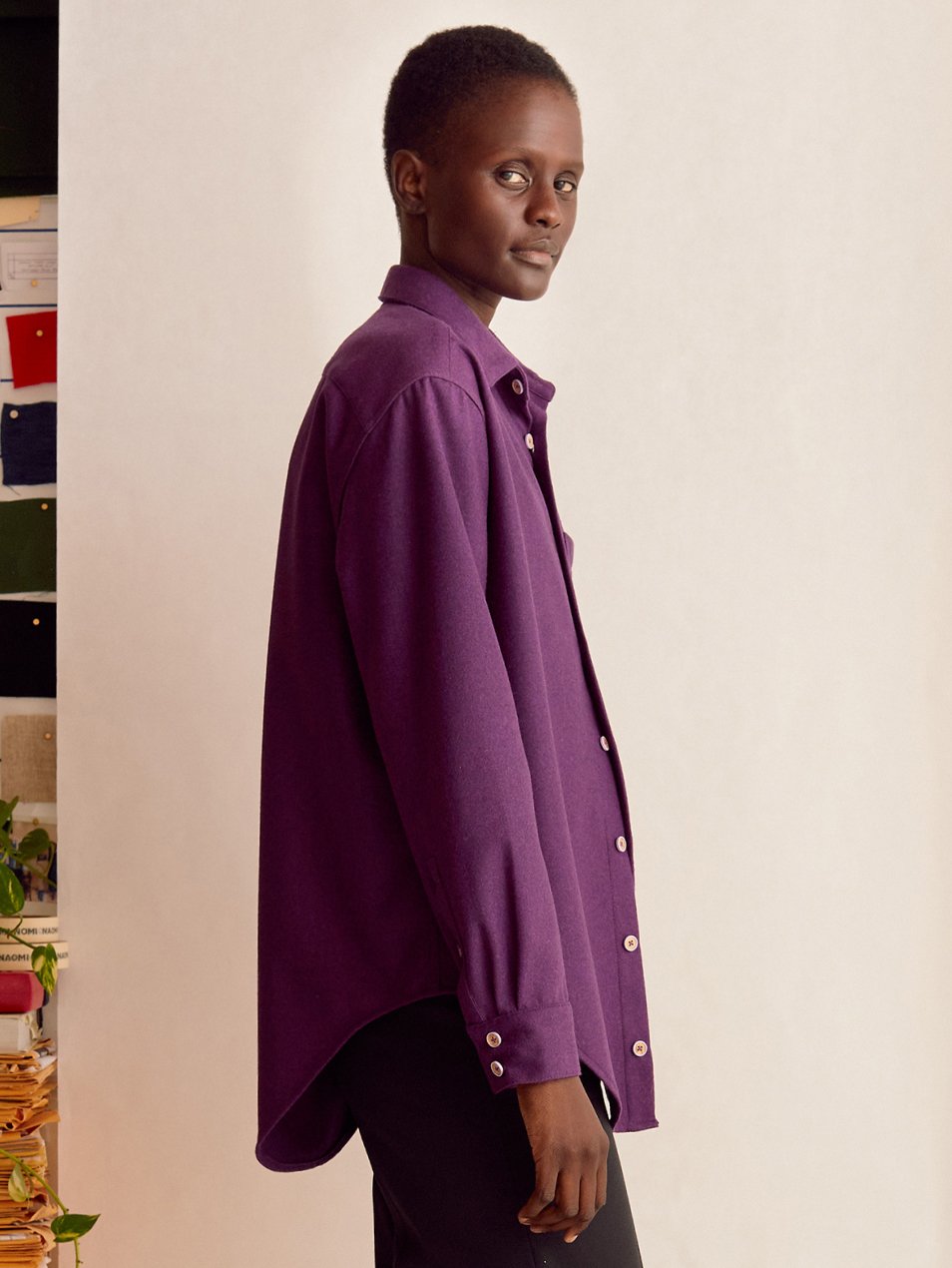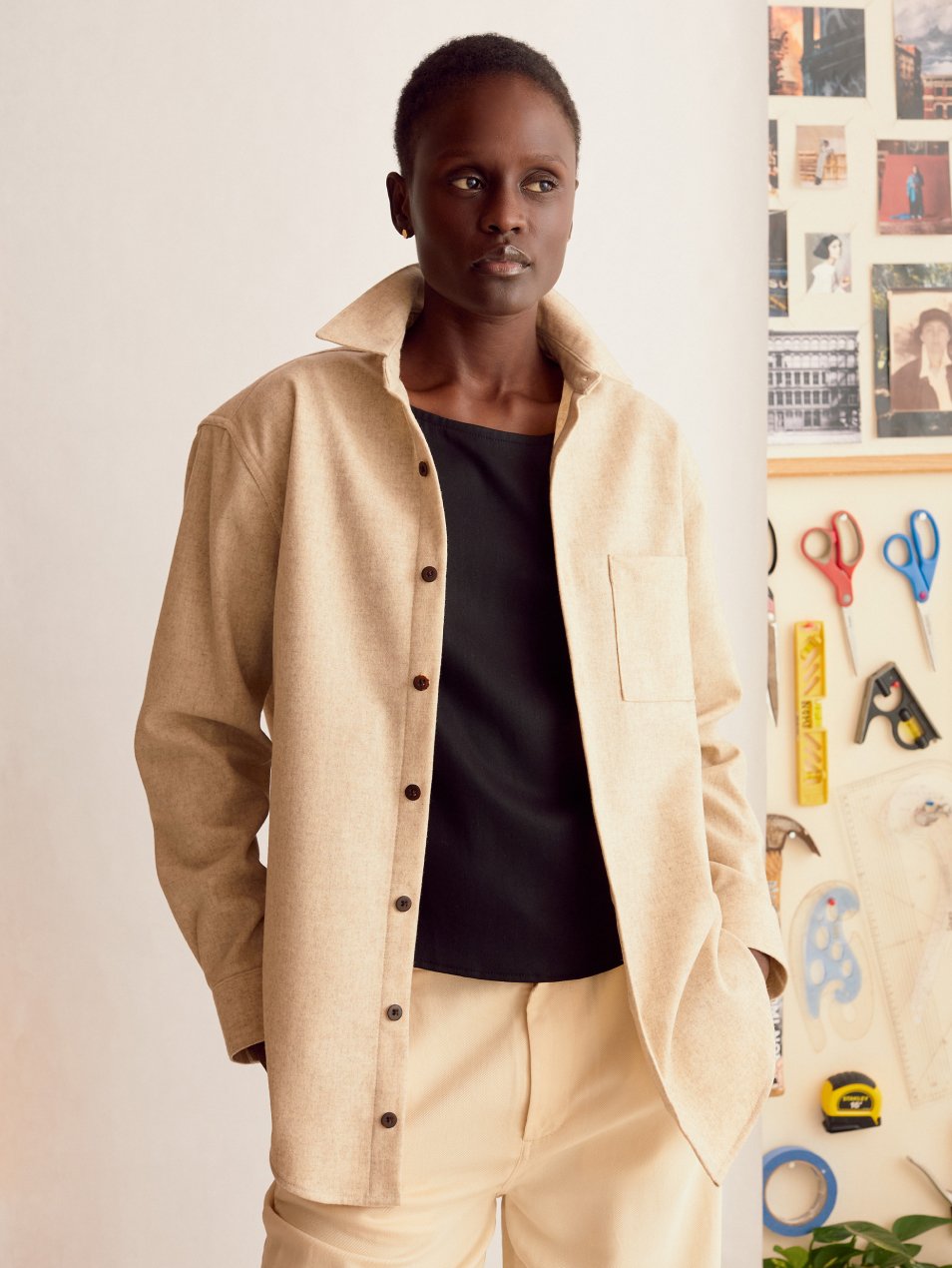Some of our partner mills have been honing their craft for centuries, and we revere the time-honored techniques that go into making our fabrics. That said, we’re grateful our partners are constantly innovating and share our constant search for less wasteful ways to make clothing. Because making something great doesn’t need to involve destroying everything that’s precious.
Allow us to nerd out on the stories, origins, and makers behind our brilliant fabrics.
Meet our Merino Wool
From Sheep To Shirt:
Made Made in the oldest operating textile mill in Germany, our merino wool is built to last and keep you warm. Strong and soft, it will keep you toasty on that ski trip in January or while braving the excessive office AC in July. It’s extremely breathable and adjusts to changes in your body temperature throughout the day.
Naturally renewable and biodegradable, merino wool is made from fibers grown by (on) living, breathing merino sheep. The sheep we work with live in New Zealand and Australia. On average, one sheep produces up to 4-5lbs of wool per year which dissolves after about 12 months in the ground. If you were wondering about mulesing (the practice of removing skin from a sheep’s butt to get extra wool), our suppliers don’t and would never do it. We love the butts of all species equally and support healthy butt practices throughout our entire supply chain.
Post haircut, the raw wool is sent to our partner mill, the oldest textile manufacturer in in Germany, a 10th generation, family owned business that’s been making fabric for 350+ years. Every season, we work directly with their team to dye our new hues. After the wool is dyed, it's spun into yarn and wound onto gigantic spools. Then, the Germans weave. Once finished, the gorgeous fabric is sent to New York to be cut and sewn into the perfect NAOMI NOMI New Oxford just for you. Strong, soft, and timeless.
Made Made in the oldest operating textile mill in Germany, our merino wool is built to last and keep you warm. Strong and soft, it will keep you toasty on that ski trip in January or while braving the excessive office AC in July. It’s extremely breathable and adjusts to changes in your body temperature throughout the day.
Naturally renewable and biodegradable, merino wool is made from fibers grown by (on) living, breathing merino sheep. The sheep we work with live in New Zealand and Australia. On average, one sheep produces up to 4-5lbs of wool per year which dissolves after about 12 months in the ground. If you were wondering about mulesing (the practice of removing skin from a sheep’s butt to get extra wool), our suppliers don’t and would never do it. We love the butts of all species equally and support healthy butt practices throughout our entire supply chain.
Post haircut, the raw wool is sent to our partner mill, the oldest textile manufacturer in in Germany, a 10th generation, family owned business that’s been making fabric for 350+ years. Every season, we work directly with their team to dye our new hues. After the wool is dyed, it's spun into yarn and wound onto gigantic spools. Then, the Germans weave. Once finished, the gorgeous fabric is sent to New York to be cut and sewn into the perfect NAOMI NOMI New Oxford just for you. Strong, soft, and timeless.
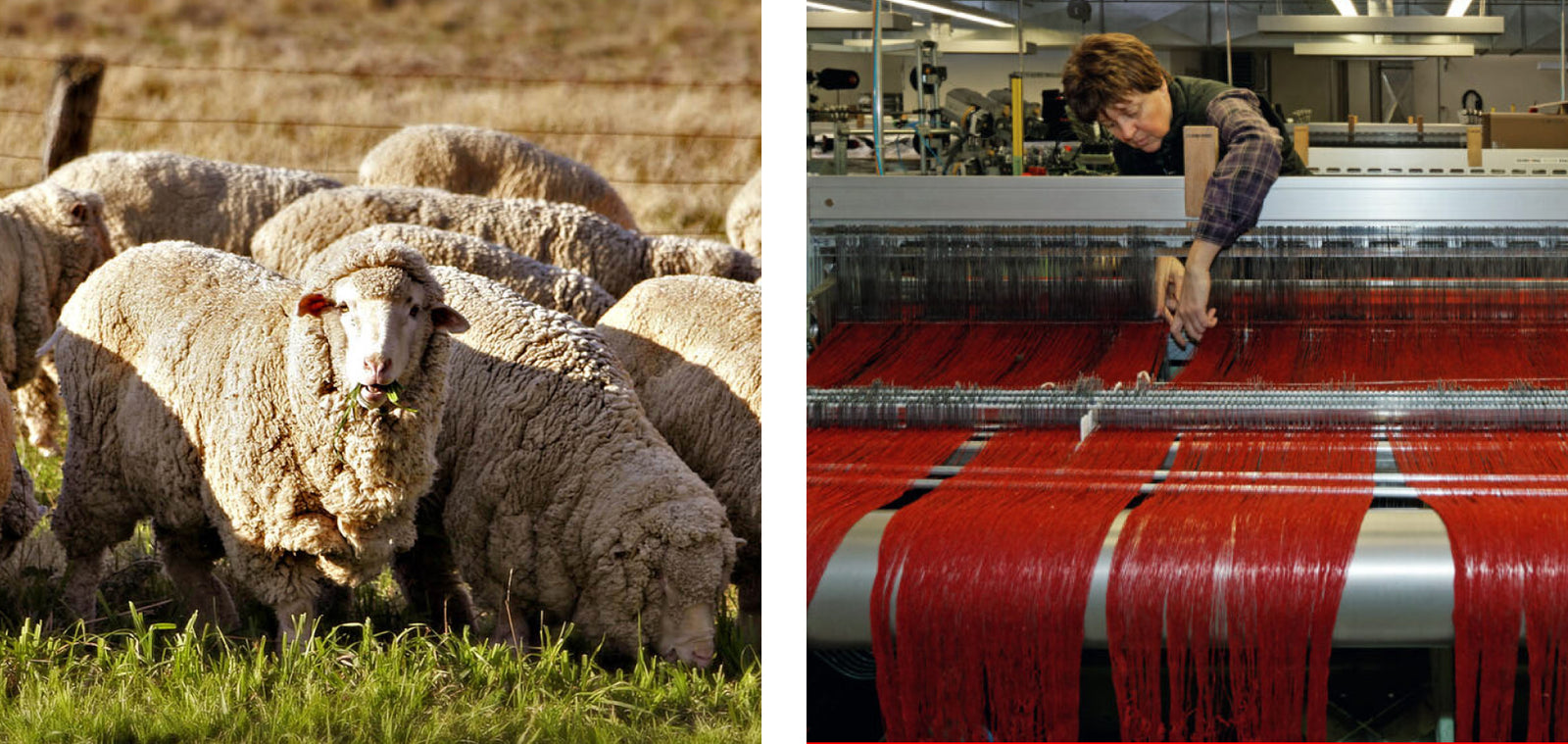
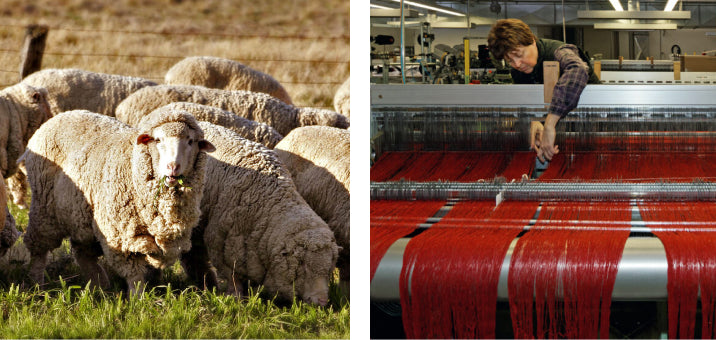
Merino’s Superpowers:
Personal, Low Sweat Space Heater
Ever seen a cold sheep? Didn’t think so. That’s because merino fibers work around the clock to stabilize your body temperature. When you’re cold, the twists and turns of the fiber block our cold air and trap warm air within. And when things do heat up, the coiled fibers naturally absorb moisture away from the skin so you won’t end up feeling drenched.
Odor Resistant
Merino’s incredible moisture absorbing capability means that the bacteria in your sweat have a harder time growing. That means merino doesn't need to be washed after every wear, which is great news for two reasons. A) No one likes laundry day, and B) the majority of a garment's impact on our environment comes not from its production, but from its time spent in a washing machine and dryer. It’s a win-win for you and the environment.
Wildly Soft
Inherently wrinkle-resistant, merino is the softest of all wool strains because the fibers are so tiny. A single merino wool fiber is only a fraction of the diameter of a human hair. Because it’s so fine, the fibers bend when directly touching your skin. Other wool fibers tend not to bend, which is why they’re scratchy.
Personal, Low Sweat Space Heater
Ever seen a cold sheep? Didn’t think so. That’s because merino fibers work around the clock to stabilize your body temperature. When you’re cold, the twists and turns of the fiber block our cold air and trap warm air within. And when things do heat up, the coiled fibers naturally absorb moisture away from the skin so you won’t end up feeling drenched.
Odor Resistant
Merino’s incredible moisture absorbing capability means that the bacteria in your sweat have a harder time growing. That means merino doesn't need to be washed after every wear, which is great news for two reasons. A) No one likes laundry day, and B) the majority of a garment's impact on our environment comes not from its production, but from its time spent in a washing machine and dryer. It’s a win-win for you and the environment.
Wildly Soft
Inherently wrinkle-resistant, merino is the softest of all wool strains because the fibers are so tiny. A single merino wool fiber is only a fraction of the diameter of a human hair. Because it’s so fine, the fibers bend when directly touching your skin. Other wool fibers tend not to bend, which is why they’re scratchy.

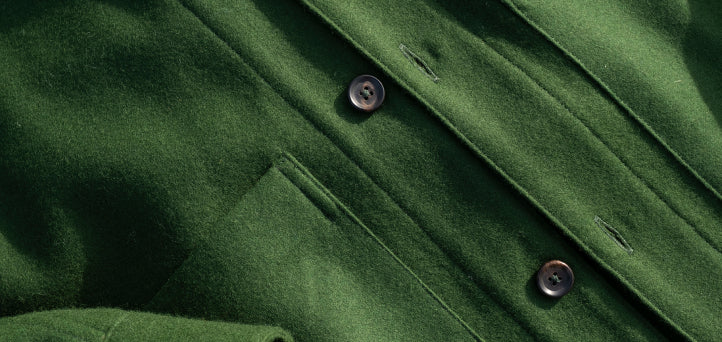
Meet our Hemp Denim
From Stem to Stitch:
Hemp is a miraculous plant, and not just in the *cough* way you might think. Hemp is incredibly lightweight, durable, long-lasting, and sustainable. Actually, in terms of being low impact, it's second only to our wool.
Hemp is a miraculous plant, and not just in the *cough* way you might think. Hemp is incredibly lightweight, durable, long-lasting, and sustainable. Actually, in terms of being low impact, it's second only to our wool.
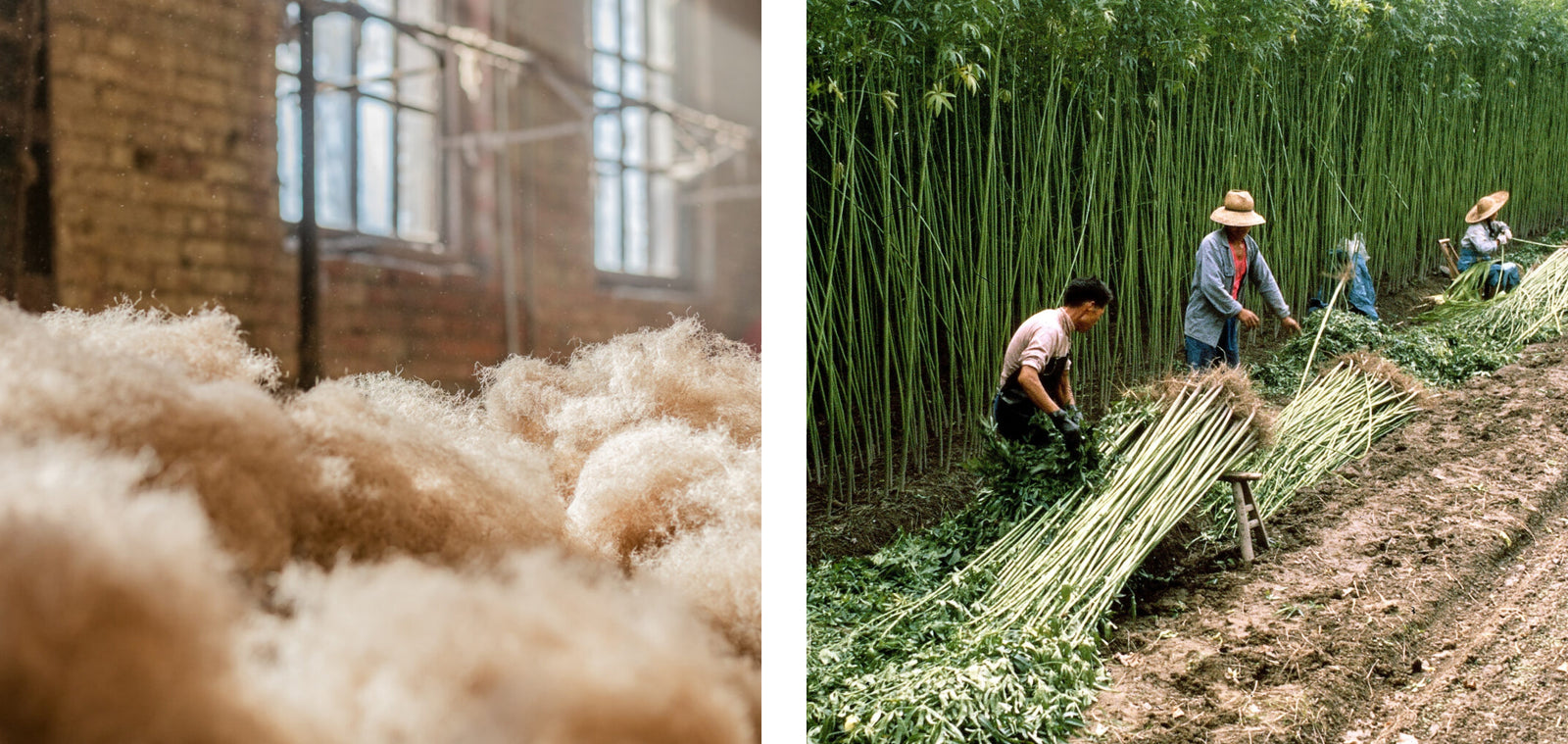
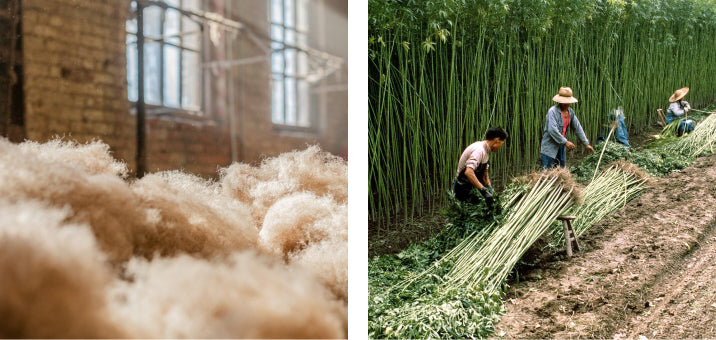
Need proof? Here are the numbers: Hemp has the power to yield up to 1300lb. of fiber per acre, which is double the amount of cotton and 160% more than linen. It grows prosperously without pesticides, herbicides, or fertilizers, and uses 70% less water per season as irrigated cotton. It can be harvested within 100 days of being planted, and grow for up to 20 years straight in the same location without the need for crop rotation or soil replenishment.
Our Hemp Denim: Our Hemp Denim is comprised of 45% OSC-Certified organic cotton grown in India & dyed in China and 55% hemp grown and harvested in China. The Chinese have the longest history of hemp cultivation (6000 years), so you could say they know a thing or two. This combination creates just the right amount of softness and strength at a deliciously light weight. It softens with every wash too, meaning you’ll reach for it again, and again, and again…
Our Hemp Denim: Our Hemp Denim is comprised of 45% OSC-Certified organic cotton grown in India & dyed in China and 55% hemp grown and harvested in China. The Chinese have the longest history of hemp cultivation (6000 years), so you could say they know a thing or two. This combination creates just the right amount of softness and strength at a deliciously light weight. It softens with every wash too, meaning you’ll reach for it again, and again, and again…
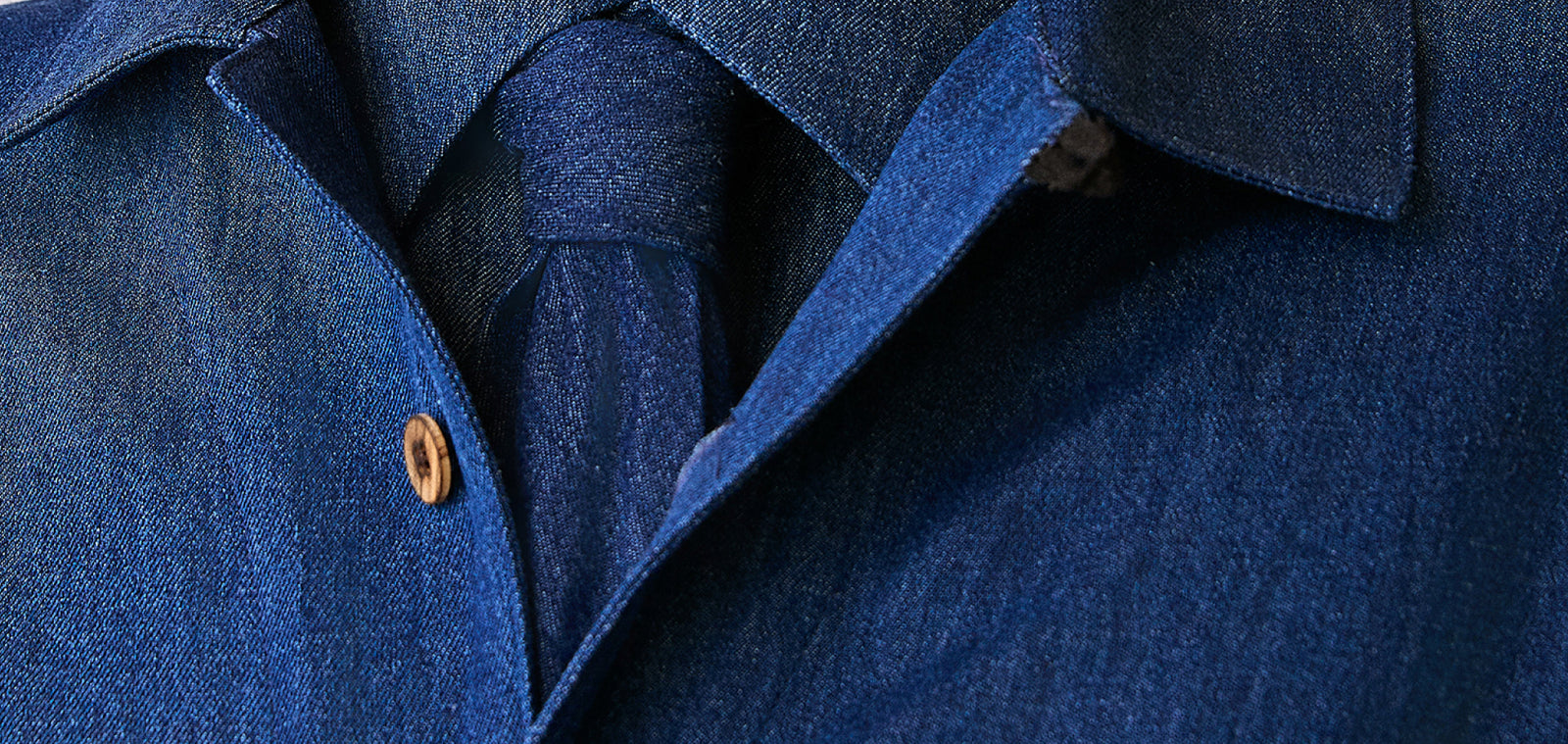
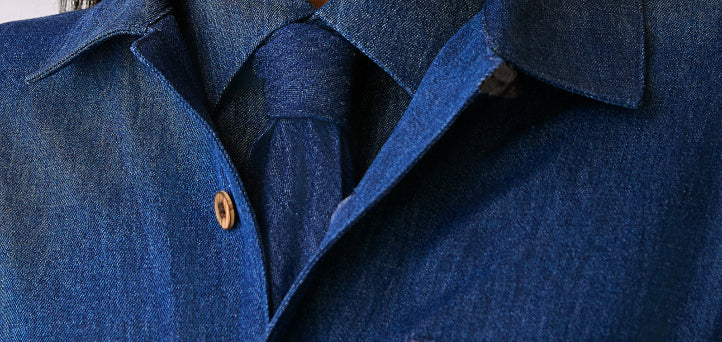
Meet our Organic Cotton
From Field to Fabric:
It is estimated that 30% of the world’s textiles are, in part, cotton. With cotton agriculture starting in the 5th millennium B.C., it’s safe to say that it’s the most widely used fabric in human history.
The cotton plant starts as a flower and then matures into a beautiful ball of fluff, which is gathered and then spun into the soft fabric we love. Breathable, absorbent, lightweight, and incredibly versatile, it’s no wonder why it’s so popular. When selecting our cotton, we wanted a weight that was strong enough to be thrown around yet billowy enough to feel effortless. After years of searching, we found just the right one.
It is estimated that 30% of the world’s textiles are, in part, cotton. With cotton agriculture starting in the 5th millennium B.C., it’s safe to say that it’s the most widely used fabric in human history.
The cotton plant starts as a flower and then matures into a beautiful ball of fluff, which is gathered and then spun into the soft fabric we love. Breathable, absorbent, lightweight, and incredibly versatile, it’s no wonder why it’s so popular. When selecting our cotton, we wanted a weight that was strong enough to be thrown around yet billowy enough to feel effortless. After years of searching, we found just the right one.
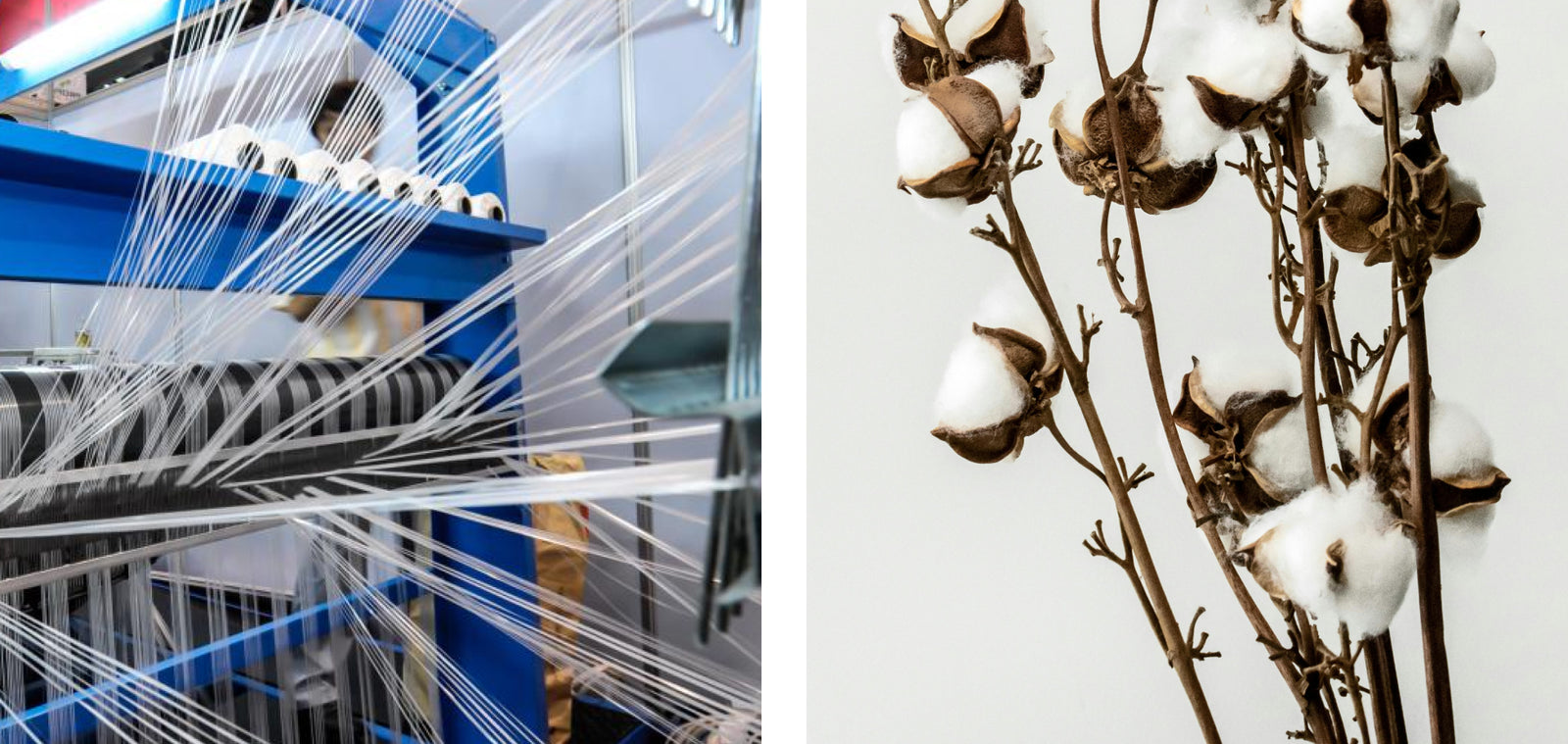
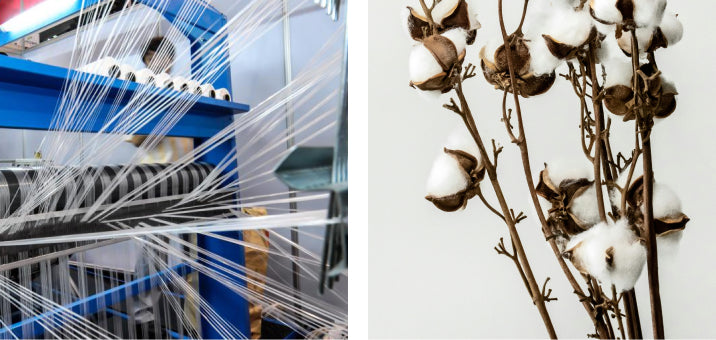
Is our cotton organic?
Indeed! The BCI-certified organic cotton used in our New Oxfords hails from Turkey, and the cotton used in our sweatshirts is 100% combed ring spun organic cotton fleece, produced in the USA.
Why’s it called an Oxford shirt anyway?
Back in the 19th century, a Scottish mill had the brilliant idea to name the season’s fabrics after fancy universities. The thinking was that all the rich boys who go to these schools would want shirts made with their university’s name. It worked, too! Kinda. Cambridge, Harvard and Yale weaves never really took off, but Oxford cloth, featuring a classic basket weave, became a mainstay for British polo players. Its breathability made it useful for early sportswear, and eventually, the cloth became so synonymous with this more casual style of shirting that the button-downs we know today are now also called Oxfords.
Indeed! The BCI-certified organic cotton used in our New Oxfords hails from Turkey, and the cotton used in our sweatshirts is 100% combed ring spun organic cotton fleece, produced in the USA.
Why’s it called an Oxford shirt anyway?
Back in the 19th century, a Scottish mill had the brilliant idea to name the season’s fabrics after fancy universities. The thinking was that all the rich boys who go to these schools would want shirts made with their university’s name. It worked, too! Kinda. Cambridge, Harvard and Yale weaves never really took off, but Oxford cloth, featuring a classic basket weave, became a mainstay for British polo players. Its breathability made it useful for early sportswear, and eventually, the cloth became so synonymous with this more casual style of shirting that the button-downs we know today are now also called Oxfords.
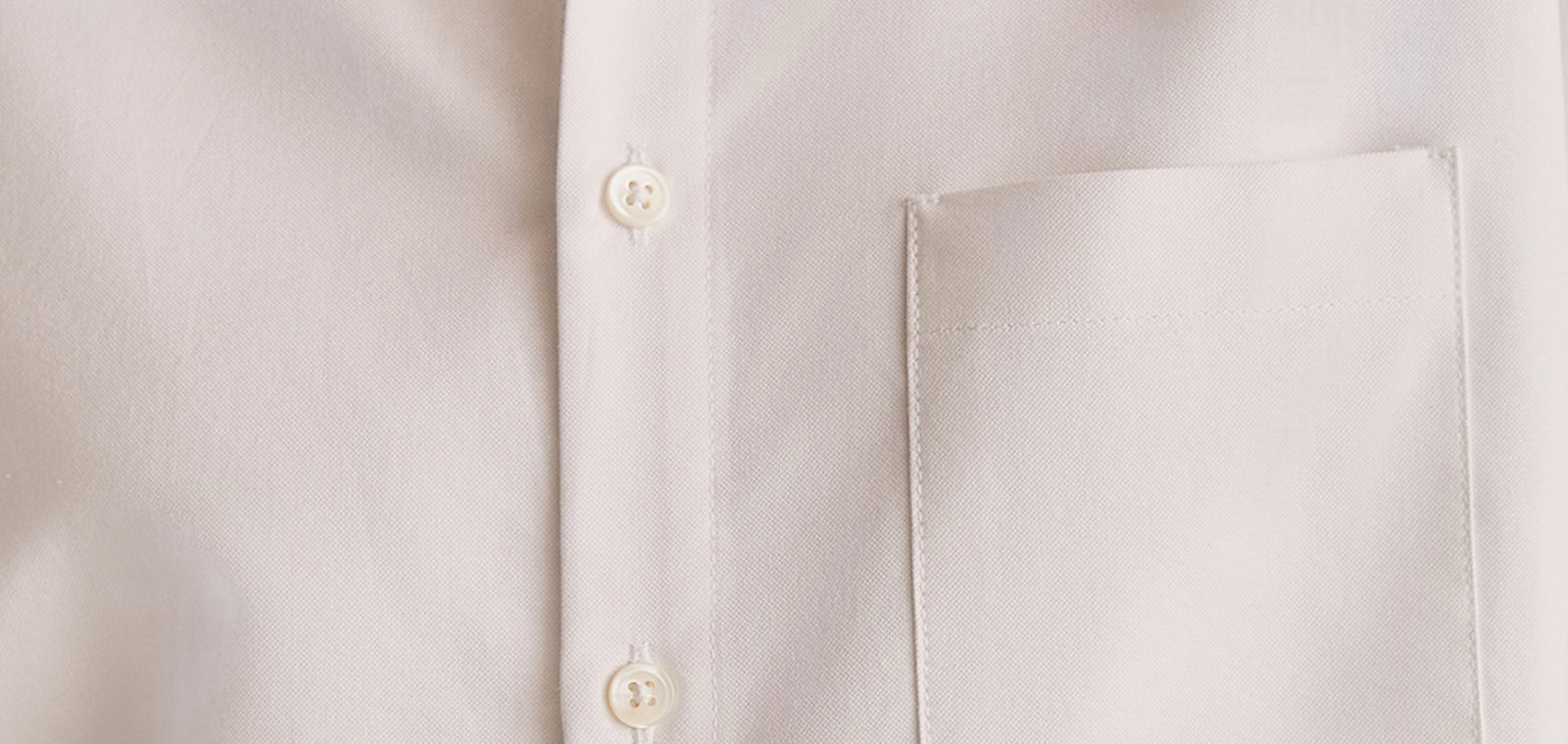
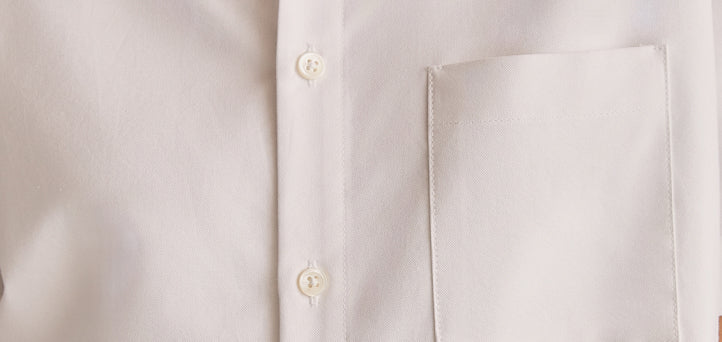
Meet our Silk Twill
From Cocoon to Cloth:
Made from the cocoon of silkworms, silk is a natural filament that takes a very long time to materialize. Five weeks from the hatching, the silkworm will have grown 10,000 times heavier and eaten 50,000 times their initial weight in plant material. Once it’s good and chubby, the worm is ready to begin spinning its cocoon. The silk is then made from the natural filament that makes up their cocoon, an 8 day process that produces thread approximately one mile long. To put it into perspective, it takes about 2500 silkworms to produce one pound of raw, 100% silk. Once the thread is produced, ours is woven into a twill formation which provides its glorious movement.
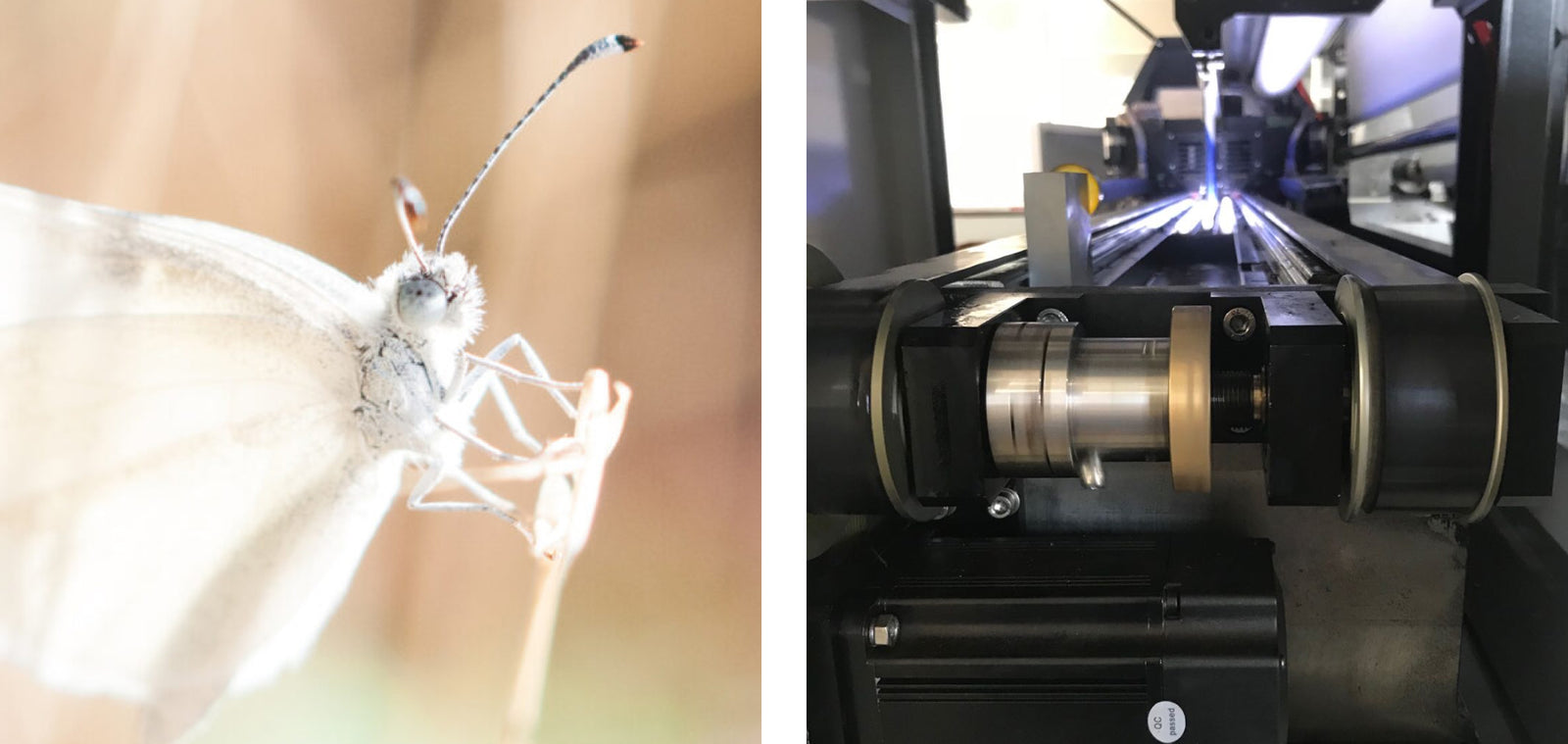
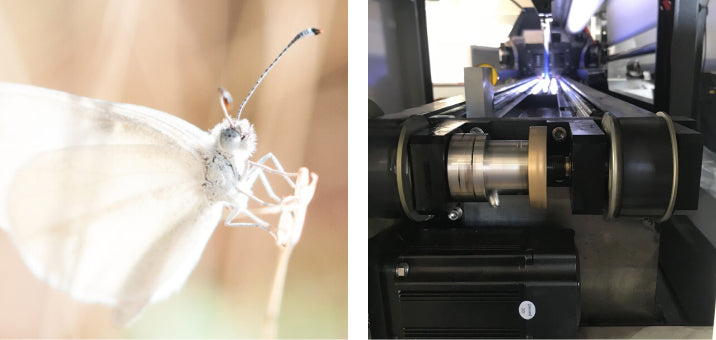
Who We Work With:
Our silk is woven and printed in the city of Hangzhou, one of the seven ancient capitals of China, commonly known as "the house of silk." With silk fabrics uncovered in the region dating back 4,700 years to the Neolithic Liangzhu culture (3400-2250 BC), you could say they're pros by now. That said, while the process of making silk is ancient, we work hard to be constantly innovating. All of our scarves are made using technology that digitally prints ink on both sides of the silk, meaning no side of the fabric is less saturated in vibrant color than the other. It's a wild technological feat that no other printing process could achieve.
Okay, it’s pretty, but what else?
With its long, tightly woven fibers, silk can actually regulate your body temperature, keeping you toasty in the sexiest way possible.
Our silk is woven and printed in the city of Hangzhou, one of the seven ancient capitals of China, commonly known as "the house of silk." With silk fabrics uncovered in the region dating back 4,700 years to the Neolithic Liangzhu culture (3400-2250 BC), you could say they're pros by now. That said, while the process of making silk is ancient, we work hard to be constantly innovating. All of our scarves are made using technology that digitally prints ink on both sides of the silk, meaning no side of the fabric is less saturated in vibrant color than the other. It's a wild technological feat that no other printing process could achieve.
Okay, it’s pretty, but what else?
With its long, tightly woven fibers, silk can actually regulate your body temperature, keeping you toasty in the sexiest way possible.
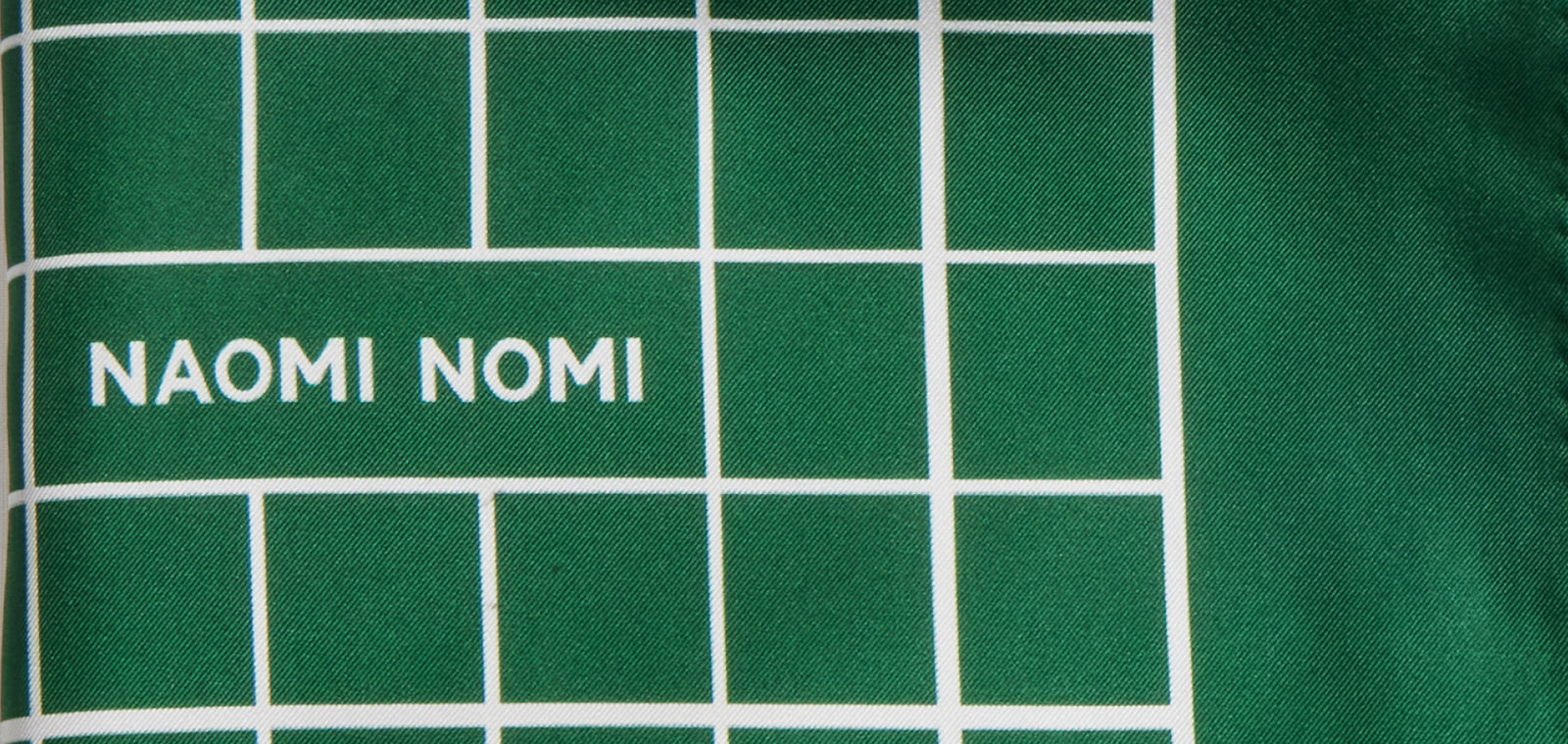
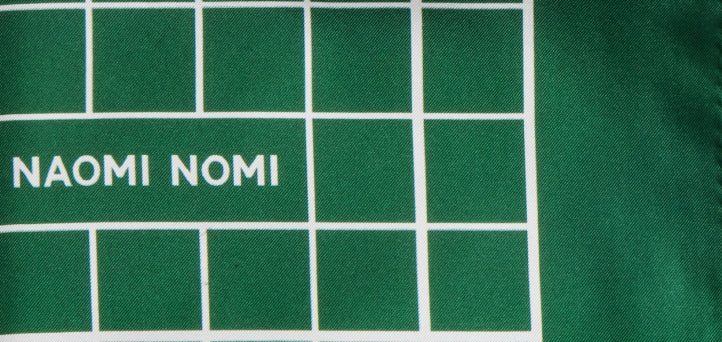
Meet our Cotton Flannel
From Fiber to Finish:
With a finer, softer, and fluffier hand feel than merino wool, cotton flannel packs an incredible warmth-preserving punch without being quite as heavy as other cool-weather fabrics. What distinguishes flannel from other cotton textiles is the thread is loosely spun and brushed with metal to gently raise small fibers that give it its characteristic downy feel.
With a finer, softer, and fluffier hand feel than merino wool, cotton flannel packs an incredible warmth-preserving punch without being quite as heavy as other cool-weather fabrics. What distinguishes flannel from other cotton textiles is the thread is loosely spun and brushed with metal to gently raise small fibers that give it its characteristic downy feel.
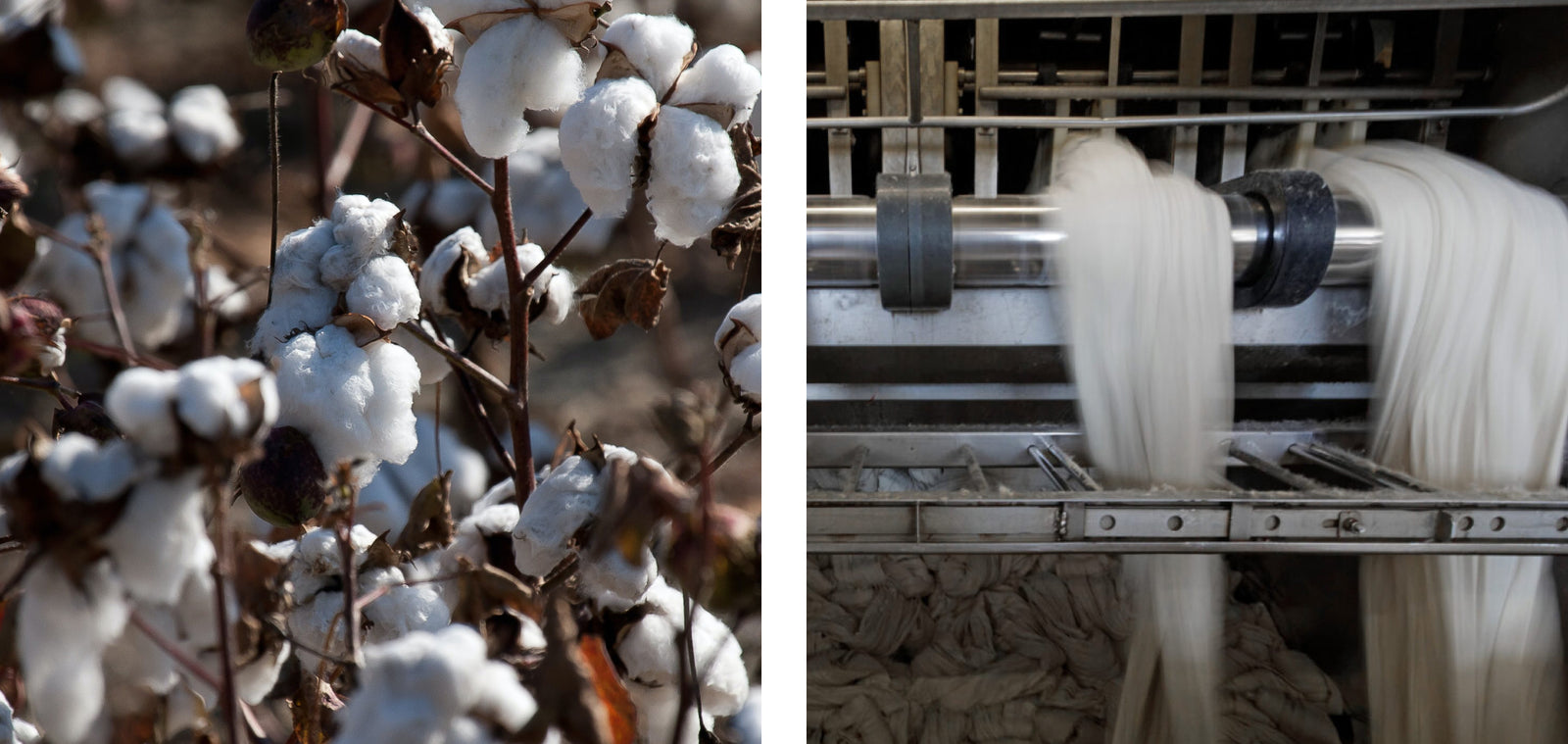
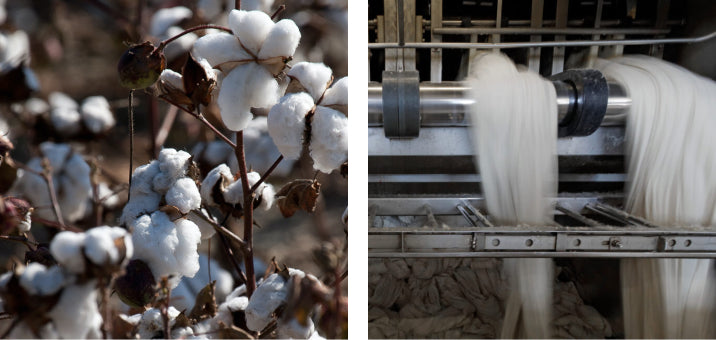
Fully Flannel:
Covered in the excess fabric scraps from the making of the shirt, even the buttons are lusciously soft to the touch.
Covered in the excess fabric scraps from the making of the shirt, even the buttons are lusciously soft to the touch.
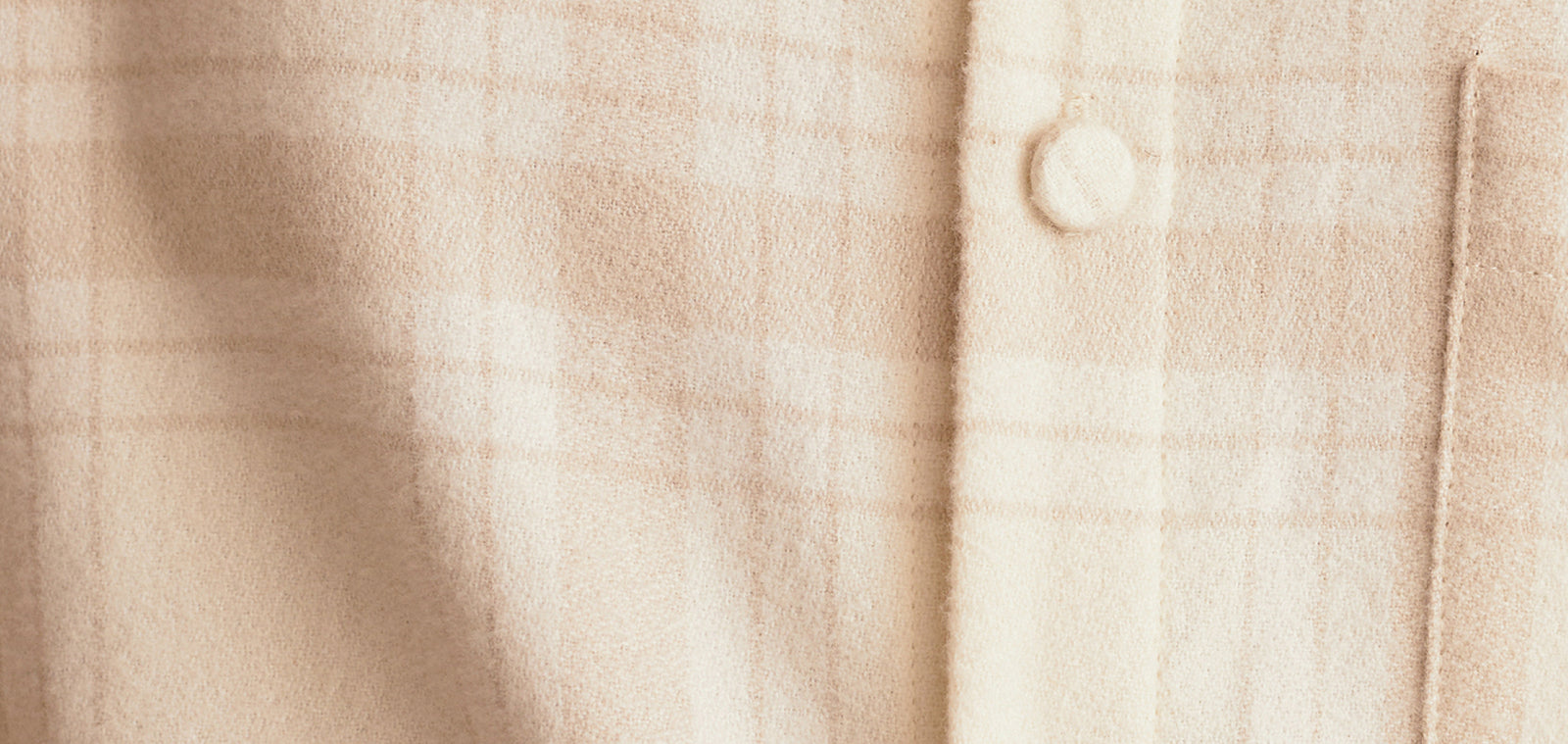
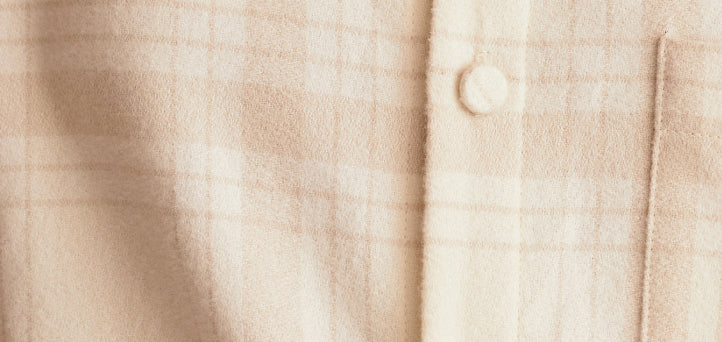
Meet our Linen
From Ground to Garment:
Made from the flax plant, linen goes through quite the process from ground to garment. First, it’s harvested through pulling, rather than cutting, to get the longest fibers possible. Next, the harvested plant must be stooked, which is the process of tying the flax linen together. It’s then left out to dry, standing in bundles called, “beats.” Once dry, the seeds are removed from the flax in a combing-like process called scutching. Only then, when the plant stock has been separated from the fibers, are we able to spin the yarn.
Woven in Ireland from flax grown in France and Belgium, our weighted linen is soft against the skin, textured to the touch, and oh-so breathable. Because of its porous nature, linen is naturally moisture-wicking, keeping you dry all day long.
Made from the flax plant, linen goes through quite the process from ground to garment. First, it’s harvested through pulling, rather than cutting, to get the longest fibers possible. Next, the harvested plant must be stooked, which is the process of tying the flax linen together. It’s then left out to dry, standing in bundles called, “beats.” Once dry, the seeds are removed from the flax in a combing-like process called scutching. Only then, when the plant stock has been separated from the fibers, are we able to spin the yarn.
Woven in Ireland from flax grown in France and Belgium, our weighted linen is soft against the skin, textured to the touch, and oh-so breathable. Because of its porous nature, linen is naturally moisture-wicking, keeping you dry all day long.
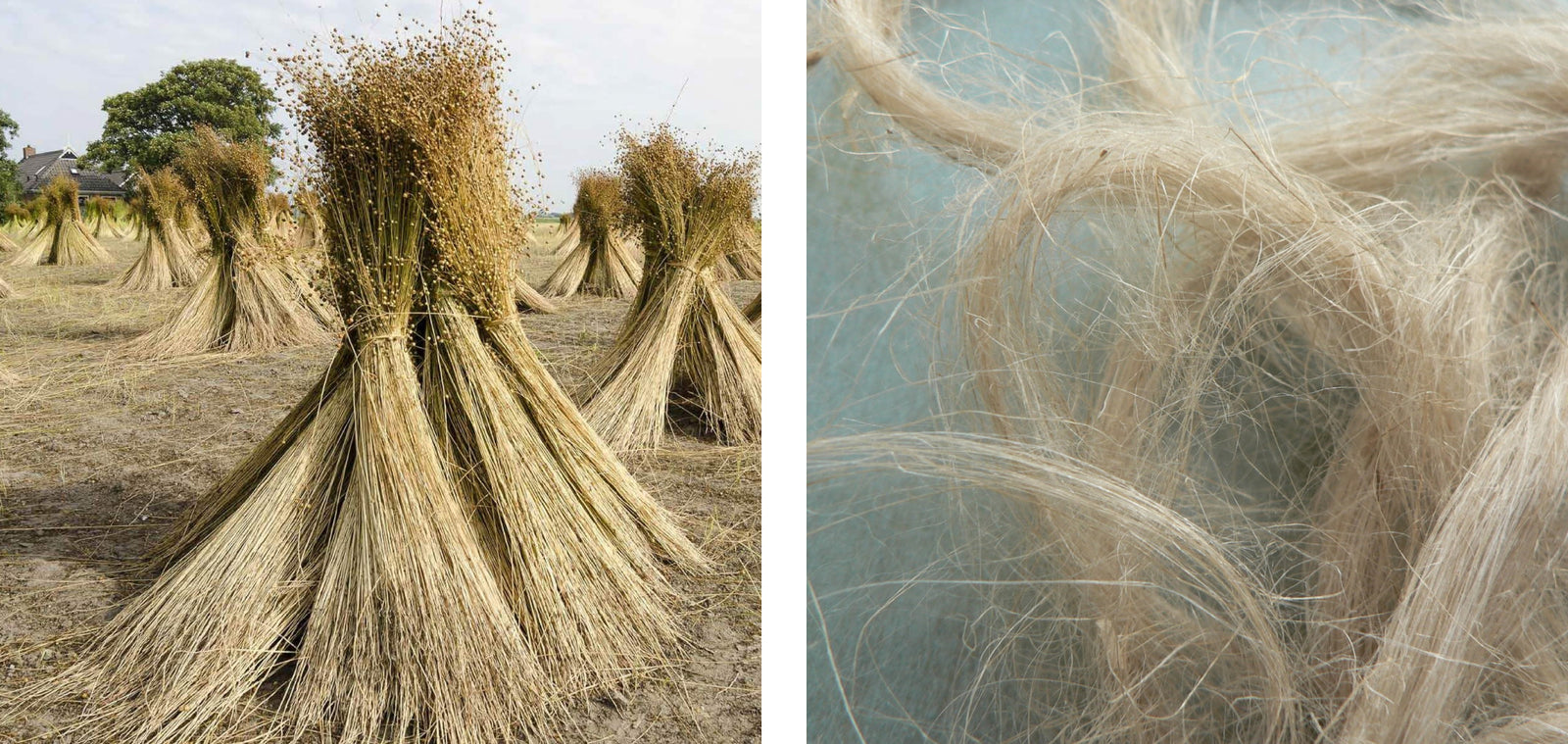
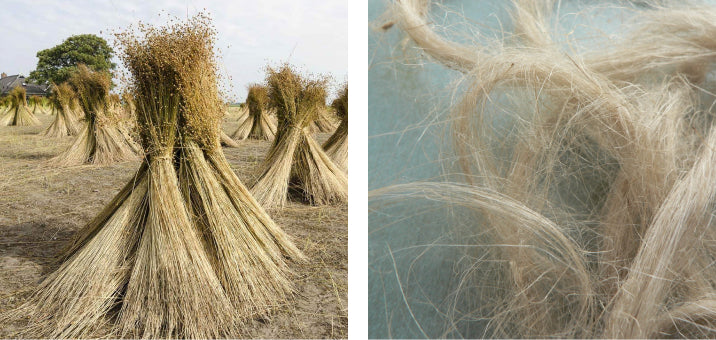
Gentle in every way:
And it’s not horrific for the planet either. Each hectare of flax is able to capture 3.7 tonnes of CO2. Flax works as a rotation crop and, unlike cotton, does not require extra irrigation to grow. Flax is able to grow with just rainfall. Lastly, natural linen is 100% biodegradable.
About those wrinkles...
Because our linen is 100% natural, yeah, it wrinkles…and we love that! Remember, “wrinkle free” linen is code for “chemically treated” linen. While steaming and gravity can of course smooth out undesired wrinkles, we think the subtle folds are beautiful, like soft landscapes that gather near the hem. Toss a linen garment on the floor, pick it up the next day and wear it without any wrinkle shame. Like all of our clothes, linen garments are meant to be worn, not just hung for display.
And it’s not horrific for the planet either. Each hectare of flax is able to capture 3.7 tonnes of CO2. Flax works as a rotation crop and, unlike cotton, does not require extra irrigation to grow. Flax is able to grow with just rainfall. Lastly, natural linen is 100% biodegradable.
About those wrinkles...
Because our linen is 100% natural, yeah, it wrinkles…and we love that! Remember, “wrinkle free” linen is code for “chemically treated” linen. While steaming and gravity can of course smooth out undesired wrinkles, we think the subtle folds are beautiful, like soft landscapes that gather near the hem. Toss a linen garment on the floor, pick it up the next day and wear it without any wrinkle shame. Like all of our clothes, linen garments are meant to be worn, not just hung for display.

